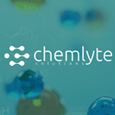Products Categories
| CAS No.: | 112-26-5 |
|---|---|
| Name: | 1,2-Bis(2-chloroethoxy)ethane |
| Article Data: | 33 |
| Molecular Structure: | |
|
|
|
| Formula: | C6H12Cl2O2 |
| Molecular Weight: | 187.066 |
| Synonyms: | 1,2-Bis(chloroethoxy)ethane;1,8-Dichloro-3,6-dioxaoctane;Bis(2-chloroethoxy)ethane;Bis(chloroethoxy)ethane;Ethylene glycolbis(2-chloroethyl) ether;Triethylene glycol dichloride;Triglycol dichloride; |
| EINECS: | 203-952-7 |
| Density: | 1.147 g/cm3 |
| Melting Point: | -31°C |
| Boiling Point: | 230 °C at 760 mmHg |
| Flash Point: | 121.1 °C |
| Solubility: | Insoluble in water |
| Appearance: | clear colorless to pale yellow liquid |
| Hazard Symbols: |
 Xn Xn
|
| Risk Codes: | 19-21/22-37/38-41-36/37/38 |
| Safety: | 26-36/37/39 |
| Transport Information: | UN 2810 6.1/PG 3 |
| PSA: | 18.46000 |
| LogP: | 1.49720 |
- 144851-82-1METHYL2-AMINO-3-FLUOROBENZOATE
- 483366-12-7(2S,4R)-1-Boc-2-cyano-4-hydroxypyrrolidine
- 173606-50-3BOC-10-AMINODECANOIC ACID
- 361456-36-2METHYL (R)-(+)-ISOCYANATO-3-PHENYLPROPI&
- 5156-58-1N-(1-Benzyl-4-pipperidinyl)-N-phenylpropanamide HCl
- 81281-59-67-Benzylideneaminotheophylline
- 50288-62-5threo-Phenyl-2-piperidyl acetamide
- 82993-81-5D-threo-Ritalinic acid hydrochloride
- 47087-37-6Z-D-Glu-OMe
- 1219080-61-1IMIDAZOLE-2-BORONIC ACID

What can I do for you?
Get Best Price
Chemistry
Triglycol dichloride (112-26-5) is called for 1,2-Bis(2-chloroethoxy)ethane ; 1,2-Bis(chlorethoxy)ethane ; 2-(2-Chloroethoxy)ethyl 2'-chloroethyl ether ; Dichlorotriethylene dioxide ; Ethane, 1,2-bis(2-chloroethoxy)- ; 1,8-Dichloro-3,6-dioxaoctane ; HSDB 5400 ,and so on. Triglycol dichloride (112-26-5) is clear colorless to pale yellow liquid.
IUPAC Name: 1,2-Bis(2-chloroethoxy)ethane
CAS: 112-26-5
Molecular Formula: C6H12Cl2O2
Molecular Weight: 187.06
Molecular structure: ![]()
EINECS: 203-952-7
Melting point: -31°C
Water Solubility: insoluble
BRN: 506177
ACD/LogD (pH 5.5): 0.83
ACD/LogD (pH 7.4): 0.83
ACD/BCF (pH 5.5): 2.51
ACD/BCF (pH 7.4): 2.51
ACD/KOC (pH 5.5): 67.24
ACD/KOC (pH 7.4): 67.24
H bond acceptors: 2
H bond donors: 0
Freely Rotating Bonds: 7
Index of Refraction: 1.44
Molar Refractivity: 43.03 cm3
Molar Volume: 163 cm3
Polarizability: 17.06 10-24cm3
Surface Tension: 31.7 dyne/cm
Density: 1.147 g/cm3
Flash Point: 121.1 °C
Enthalpy of Vaporization: 44.77 kJ/mol
Boiling Point: 230 °C at 760 mmHg
Vapour Pressure: 0.102 mmHg at 25°C
Uses
1. Triglycol dichloride (112-26-5) is comonly used as solvent for hydrocarbons, oils, etc. 2. Triglycol dichloride (112-26-5) can be used as extractant, intermediate for resins, insecticides, and organic synthesis.
Toxicity Data With Reference
| Organism | Test Type | Route | Reported Dose (Normalized Dose) | Effect | Source |
|---|---|---|---|---|---|
| guinea pig | LD50 | oral | 120mg/kg (120mg/kg) | BEHAVIORAL: GENERAL ANESTHETIC GASTROINTESTINAL: OTHER CHANGES KIDNEY, URETER, AND BLADDER: OTHER CHANGES | Journal of Industrial Hygiene and Toxicology. Vol. 23, Pg. 259, 1941. |
| rabbit | LD50 | skin | 1410uL/kg (1.41mL/kg) | Union Carbide Data Sheet. Vol. 8/28/1957, | |
| rat | LD50 | oral | 250mg/kg (250mg/kg) | Union Carbide Data Sheet. Vol. 8/28/1957, |
RTECS: KH4900000
Consensus Reports
Reported in EPA TSCA Inventory.
Safety Profile
Poison by ingestion. Moderately toxic by skin contact. A skin and eye irritant. Combustible when exposed to heat or flame; can react with oxidizing materials. To fight fire, use CO2, dry chemical. When heated to decomposition it emits toxic fumes of Cl−.
Hazard Codes: Xn ![]()
Risk Statements: 19-21/22-37/38-41-36/37/38 (19: May form explosive peroxides 21/22: Harmful in contact with skin and if swallowed 37/38: Irritating to respiratory system and skin 41: Risk of serious damage to eyes 36/37/38: Irritating to eyes, respiratory system and skin)
Safety Statements: 26-36/37/39 (26: In case of contact with eyes, rinse immediately with plenty of water and seek medical advice 36/37/39: Wear suitable protective clothing, gloves and eye/face protection)
RIDADR: UN 2810 6.1/PG 3
WGK Germany: 3
HazardClass: 6.1
PackingGroup: III
HS Code: 29091900
Specification
Removal in wastewater treatment of Triglycol dichloride (112-26-5) can be stated as follows:
Total removal:1.97 percent
Total biodegradation:0.09 percent
Total sludge adsorption:1.83 percent
Total to Air:0.04 percent
(using 10000 hr Bio P,A,S)
-
Premium Related Products

